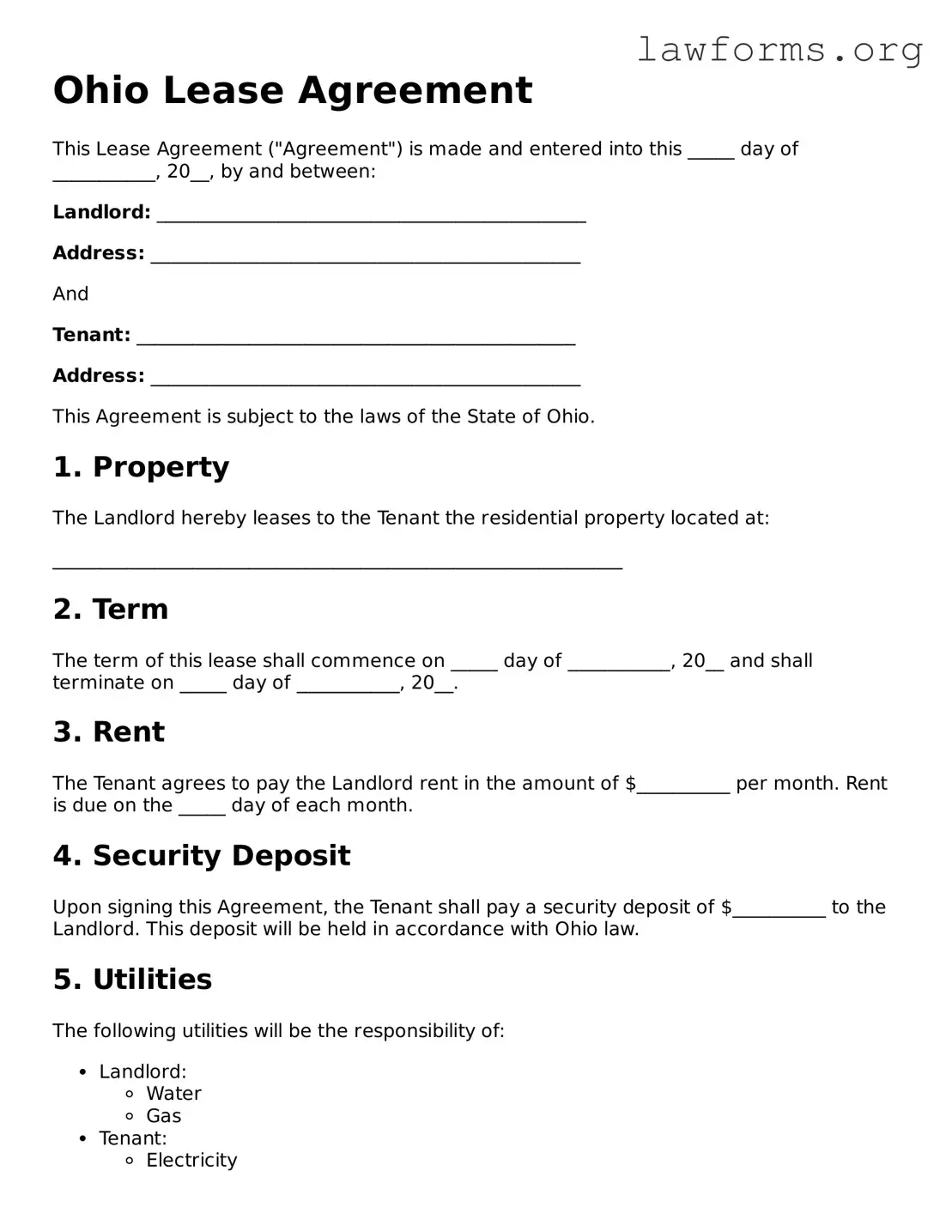Ohio Lease Agreement
This Lease Agreement ("Agreement") is made and entered into this _____ day of ___________, 20__, by and between:
Landlord: ______________________________________________
Address: ______________________________________________
And
Tenant: _______________________________________________
Address: ______________________________________________
This Agreement is subject to the laws of the State of Ohio.
1. Property
The Landlord hereby leases to the Tenant the residential property located at:
_____________________________________________________________
2. Term
The term of this lease shall commence on _____ day of ___________, 20__ and shall terminate on _____ day of ___________, 20__.
3. Rent
The Tenant agrees to pay the Landlord rent in the amount of $__________ per month. Rent is due on the _____ day of each month.
4. Security Deposit
Upon signing this Agreement, the Tenant shall pay a security deposit of $__________ to the Landlord. This deposit will be held in accordance with Ohio law.
5. Utilities
The following utilities will be the responsibility of:
6. Pets
Pets are / are not allowed on the premises. If allowed, the Tenant agrees to follow the following pet policies:
- Maximum of _____ pets.
- Pet deposit: $__________.
7. Maintenance and Repairs
Tenant agrees to keep the premises in good condition. Landlord shall be responsible for repairs other than those caused by Tenant's negligence.
8. Termination
Either party may terminate this lease with a written notice of _____ days.
9. Governing Law
This Agreement shall be governed by and construed in accordance with the laws of the State of Ohio.
10. Signatures
By signing below, both parties agree to the terms of this lease.
Landlord Signature: ____________________________ Date: __________
Tenant Signature: _____________________________ Date: __________
